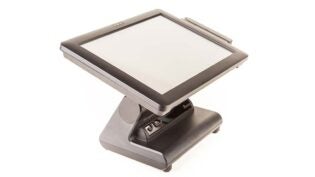Home > Technology > Hardware >
Enterprise Mobility Management: Getting It Right the First Time
By: Scott Resnick

We recently discussed the broad implementation of enterprise mobility standards for small and medium businesses. Today we’re going a little more in depth into the specific challenges enterprise mobility presents to business owners, managers, and IT decision-makers.
The business world is rapidly moving beyond yesterday’s bulky desktop computers and toward mobile devices — namely laptops, tablets, and smartphones. This means companies of all sizes must now develop and implement standardized protocols for Enterprise Mobile Management (EMM). Smart companies will custom-tailor these protocols to their unique needs. By paying attention to the details in EMM, companies can get it right the first time.
Know Your Lay of the LANd
The first step in designing an effective EMM policy is to realistically evaluate the current state of your company’s LAN infrastructure and to identify areas where improvement may be needed. For instance:
- How easily your mobility needs can scale upward or downward, depending on any future contingencies.
- The connectivity needs of your entire organization from the top down — from all full-time onsite staff, to employees based remotely, to partners and contractors.
- Whether you wish to continue issuing company equipment to your employees, or transition to a Bring-Your-Own-Device (BYOD) policy, taking into account the entire range of devices and mobile operating systems. (We’ll go further into BYOD in a future post.)
Who’ll Be Your CMO?
Management-by-committee can often become confusing, so we recommend appointing a “Chief Mobility Officer” (CMO) from within your IT team. This individual will be master of all things enterprise mobility, acting as the sole point-of-contact and reporting directly to the company president or CIO. Your CMO will be responsible for evaluating the company’s mobility needs, choosing the best solutions from the marketplace, and distributing / enforcing EMM policies throughout the company.
Make EMM Fit in Your Total Communications Puzzle
Another important consideration is how well an EMM policy fits in your organization’s overall communications platform. EMM can seamlessly integrate the full spectrum of mobile devices with your existing business phone system. Policies can even integrate necessary features, like secure voicemail and user-friendly conference calling, or advanced capabilities, like optimized viewing/participation in online training presentations and webinars.
Also, investigate how your EMM can incorporate the latest advancements in mobile VoIP (mVoiP), which can greatly reduce the hassles involved with allocating and tracking GSM phone minutes. An ideal configuration automatically switches from conventional 4G to mVoIP within range of any strong WiFi hotspot.
Choose Your Tools Wisely
Air-tight security is yet another factor in constructing your EMM policy. Many small and medium-size businesses turn to third-party EMM security suites to guard their networks from intrusive malware, viruses, and other emerging cyber-threats. While many big-name vendors provide trusted turnkey add-on security products, the endless barrage of new threats mandate major product updates about every three to six months. One recent, welcome enhancement to mobile enterprise security is a remotely-triggered wiping technology, or a virtual “kill switch,” enabling an IT administrator to instantly render sensitive company data unreadable on a lost or stolen device.
Listen for Feedback
Lastly, whether a company employs 30 employees or 300, no one should feel “reined in” by a one-size-fits-all approach to EMM. Incorporate feedback from all levels of the organization — via regular surveys, informal focus groups, or an email suggestion box — so that mobile devices can boost productivity across the board.
Enterprise mobility is unavoidable in business IT, But it doesn’t need to be scary or overwhelming. With a knowledgeable partner and plenty of foresight in choosing the right hardware and software solutions, the transition — or fine tuning — of your company’s mobile connectivity platform can be seamless and pain-free.
This article was originally published by TTI Houston
Published: October 21, 2014
1923 Views
1923 Views














